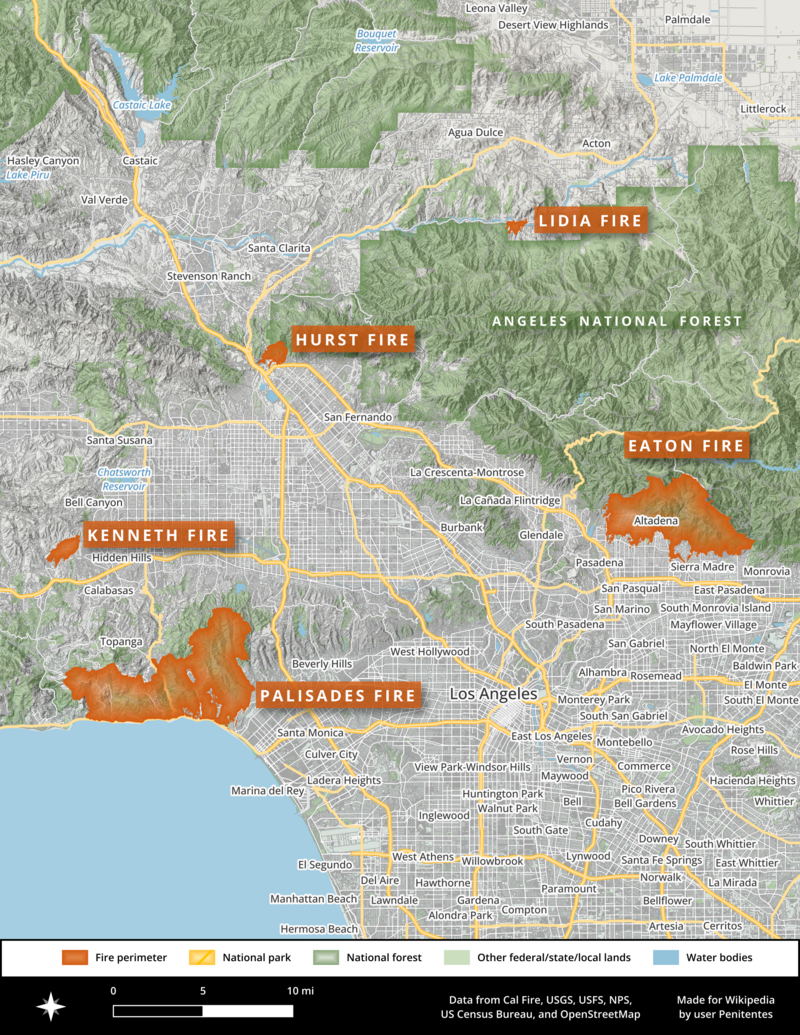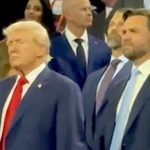Dan La Botz
Posted January 22, 2025

SINCE THIS ARTICLE was published, the number of deaths resulting from the series of fires has risen to 28. On January 22nd another fire broke out just north of Los Angeles. Within a couple of hours the Hughes fire consumed more than 5,000 acres and forced residents to evacuate. –The ATC Editors
A CATASTROPHIC FIRE is sweeping through Los Angeles, destroying entire neighborhoods and global warming with its extreme weather, in this case extremely high wind velocity, is the principal cause. Since they began last Wednesday and as I write on January 12, the fire has swept over 37,000 acres, destroyed more than 12,400 homes, businesses, and schools, 16 people have been killed and 13 people are missing, while 153,000 people have been forced to evacuate. Some communities look like they have been bombed. The city has declared a health emergency because of the dense and dangerous smoke.
Wildfires are regular events in Southern California, sometimes destroying a few houses, but this is the worst such event in Los Angeles and in U.S. history, and it is largely due to the hot Santa Ana winds. The Santa Ana, hot winds from the Mojave Desert, occur every year at this time, with gusts of as high as 50 miles an hour which dries out the chaparral and creates ideal conditions for fires, but this time winds had gusts of 100 miles an hour. Those high winds made it impossible to use the firefighting planes that, working with ground crews, drop water and chemicals to put out the fires.
California has suffered a decades-long drought, though it ended in 2023. Los Angeles received more rain than usual in the last two years, but therefore chaparral grew, and a hot summer and fall turned it into kindling. Fires started and then came the winds. Five fires broke out in different parts of the area, the largest the Palisades and Eaton fires, but also the smaller Lidia, Hurst, and Kenneth fires. Los Angeles has dozens of fire engines and 9,000 firefighters engaged and they are the most experienced with wildfires in the country, but they are not enough. Other firefighters have come to help from Northern California, Mexico, Canada.
In behavior unprecedented in such a disaster, President-elect Donald Trump blamed California’s Democratic governor Gavin Newsom for the fires, calling the governor “Newscum.” Trump falsely claimed that Newsom failed to sign a “water restoration declaration” that would have provided more water from Northern California—but there was no such document or plan. Trump has not responded to Newsom’s calls or letters and during his first presidential term, Trump cut off disaster assistance to the state.
While global warming that brought the high winds is the fundamental cause of the fire, there are other issues as well. In 2008 California adopted a new building code aimed at reducing fires, but most Los Angeles buildings were built before then and have not been brought up to code. Off and on for a hundred years, Los Angeles was a boomtown—agriculture boomed first, then oil was discovered, the movie industry developed, later came aircraft manufacturing and military production, international trade, and tourism—and each boom led the city to expand willy-nilly. The city didn’t begin to plan its development until the 1940s, but throughout the twentieth century planning and regulation were weak. Most recently, too many neighborhoods were established in the rural-urban interface where wildfires are most common and most dangerous, embers leaping from chaparral, to trees, to houses.
Los Angeles already had a housing shortage and high rents, with 100,000 homeless people in Los Angeles County, and these fires will make it worse. People will want to rebuild, risking similar future disasters.
While California does best at regulating the use of carbon fuels and making the transition to other sources of energy, the United States has not been able to sufficiently reduce the use of carbon fuels. So greenhouse gases grow, global warming continues, and we have extreme weather events, from floods to fires. The country needs to end the use of carbon fuels and we need a movement than can force corporations and politicians to do so.
International Viewpoint, 12 January 2025




Leave a Reply